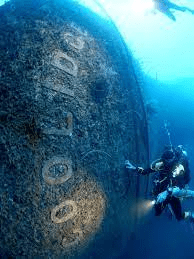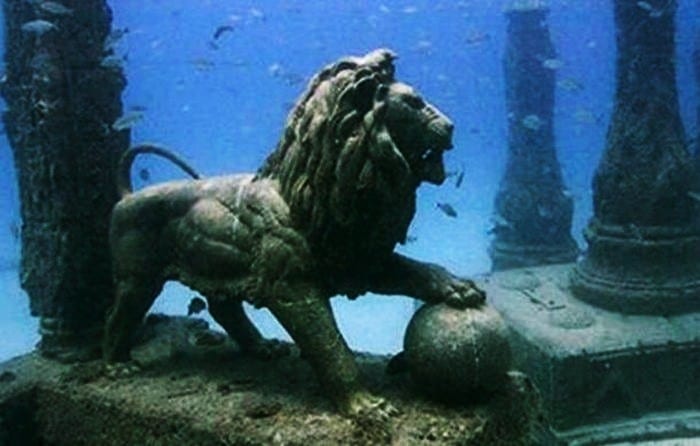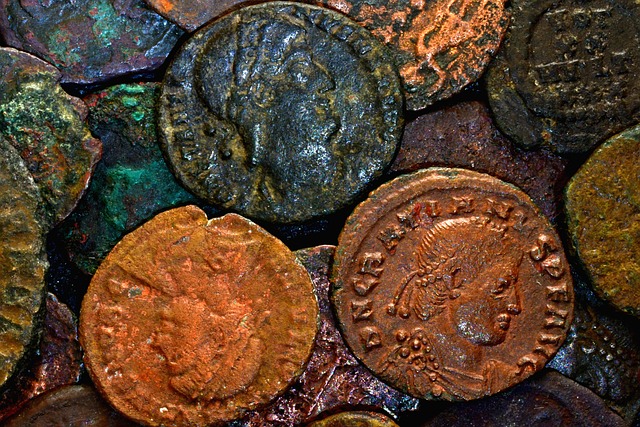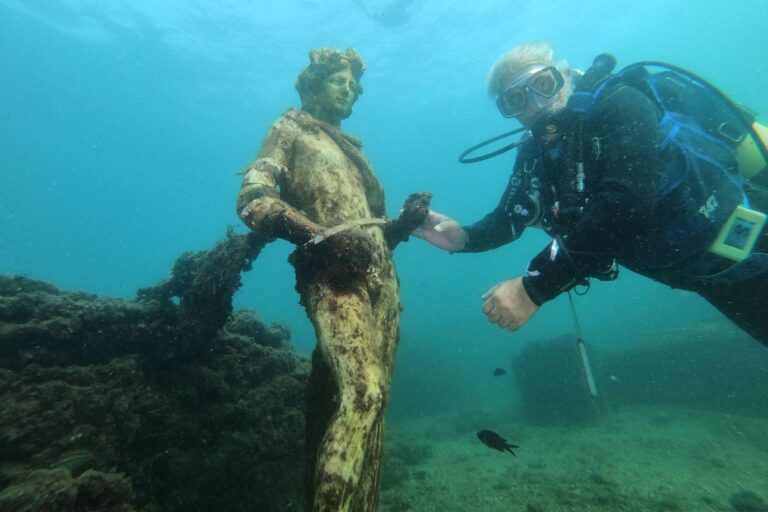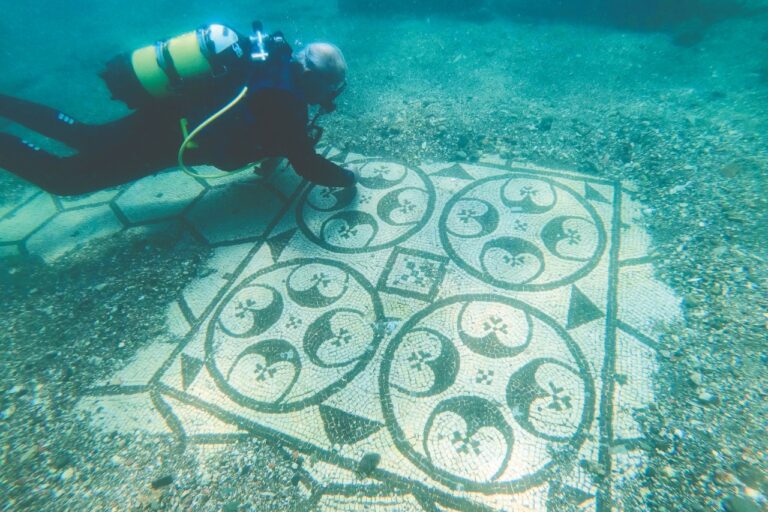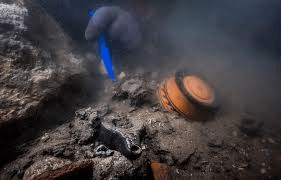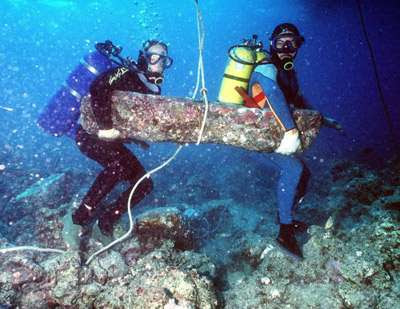Underwater Discoveries that Shape Our History
Underwater discoveries have played a significant role in shaping our understanding of history. These findings provide us with valuable insights into the past, allowing us to explore and learn about civilizations, events, and cultures that were previously unknown or forgotten.
The significance of underwater discoveries lies not only in their historical importance but also in the invaluable knowledge they offer regarding our ancestors’ way of life. By exploring these underwater sites, archaeologists and researchers can reconstruct historical events, study ancient technologies, and gain a deeper understanding of cultural practices and societal developments.
Table of Contents
Ancient Shipwrecks
Shipwrecks hold a significant place in history, offering valuable insights into the past. One of the most famous shipwrecks is the Titanic, which sank in 1912 and continues to captivate the world with its tragic story. The Titanic’s historical importance lies not only in the lives lost but also in the lessons learned about maritime safety and regulation. The discovery and exploration of this shipwreck have played a crucial role in understanding the early 20th-century shipping industry.
Advancements in technology and methods have been instrumental in discovering and studying ancient shipwrecks. Submarines equipped with sonar technology and remotely operated vehicles (ROVs) with high-definition cameras allow researchers to explore these underwater sites in detail. These technological advancements enable archaeologists and historians to piece together the stories behind these sunken vessels and gather information about the time period, culture, and trade routes.
Exploring ancient shipwrecks provides valuable insights into our history. These underwater discoveries reveal the artifacts, cargo, and even human remains that have been preserved over centuries. By studying these findings, historians gain a deeper understanding of trade networks, maritime navigation, and technological advancements of the past. The impact of these discoveries is immeasurable, as they challenge existing historical narratives and shed new light on lost cultures and civilizations.
Ancient shipwrecks not only offer historical insights but also serve as a reminder of our shared human experience. They evoke a sense of curiosity and wonder, sparking our imagination as we explore the mysteries of the deep sea. These underwater discoveries are a testament to the resilience of the human spirit, reminding us of our connection to the past and the need to preserve our underwater heritage for future generations to explore and learn from.
In conclusion, ancient shipwrecks hold immense historical importance. The discoveries made through technology and methods used to study these wrecks provide crucial information about past cultures and civilizations. Insights gained from these underwater sites reshape our understanding of history and inspire ongoing research and exploration. Preserving and protecting our underwater heritage is essential for uncovering new discoveries and enriching our knowledge of the past.
Lost Cities
Exploration of ancient civilizations and lost cities submerged under water has been a captivating subject for archaeologists and history enthusiasts alike. These submerged cities, once thriving centers of civilization, unknowingly lay hidden beneath the sea for centuries. The discovery and exploration of these lost cities have provided invaluable insights into our past and have reshaped our understanding of history.
One significant example of a submerged city is Heracleion, an ancient Egyptian city that was discovered submerged in the Mediterranean Sea. The mere existence of this city was previously known from ancient texts, but its exact location remained a mystery. The underwater excavation of Heracleion has revealed remarkable archaeological treasures, including temples, statues, and even ships. These artifacts have shed light on the once prosperous trade networks and cultural exchanges between ancient Egypt and other Mediterranean civilizations.
The discoveries of submerged cities like Heracleion have fundamentally altered our perception of ancient civilizations and their global connections. They challenge our traditional understanding of history and highlight the richness and complexity of past civilizations. The study of these submerged cities allows us to piece together the puzzle of our collective human heritage and understand the cultural, economic, and social dynamics that shaped our world.
Through the analysis of these submerged cities, we have gained a deeper appreciation of the resilience and adaptability of ancient societies. We now understand that many of these cities were built near water sources, anticipating the rising sea levels that eventually led to their submersion. These ancient civilizations developed advanced engineering techniques and intricate knowledge of their natural surroundings, leaving a lasting legacy that continues to awe and inspire.
The exploration and study of lost cities have also fostered interdisciplinary collaboration. Experts from a variety of fields, including archaeology, oceanography, and geology, join forces to piece together the fragmented stories of these submerged cities. The use of advanced technology, such as remotely operated vehicles and 3D imaging, allows us to explore and document these underwater sites with unprecedented accuracy.
In conclusion, the discoveries of lost cities submerged under water, such as Heracleion, have revolutionized our understanding of history. These excavations provide a window into the past, revealing the achievements, advancements, and mysteries of ancient civilizations. By unraveling the secrets of these submerged cities, we are not only preserving our cultural heritage but also gaining valuable knowledge about our shared human history. The ongoing exploration and research in this field hold the potential to unveil even more lost cities and to further enrich our understanding of our collective past.
Sunken Treasures
In the depths of the ocean, lie hidden treasures that hold immense historical and cultural value. Underwater discoveries of valuable artifacts and treasures have provided fascinating insights into our past and continue to shape our understanding of history.
These sunken treasures offer a unique glimpse into different eras and civilizations. From ancient coins to intricate jewelry and priceless artworks, these artifacts are like time capsules that have survived the test of time. They allow us to appreciate the craftsmanship and cultural significance of past societies.
Examining these treasures within their historical context is crucial. They provide evidence of trade routes, cultural exchanges, and economic systems that existed hundreds or even thousands of years ago. The discovery of a shipwreck laden with porcelain from a distant land, for example, can shed light on ancient trade networks and the global interconnectedness of civilizations.
Prominent sunken treasures, such as the Antikythera mechanism, a mechanical device found in a shipwreck off the coast of Greece, have captivated historians and scientists alike. The mechanism, dating back to the 1st century BCE, is considered one of the earliest known analog computers and has expanded our knowledge of ancient technology.
Beyond their historical significance, sunken treasures have cultural value as well. They are emblematic of a nation’s heritage and serve as tangible connections to its past. For instance, the recovery of artifacts from the Vasa shipwreck in Sweden has not only enriched our knowledge of 17th-century maritime history but has also become a source of national pride.
However, exploring and preserving these sunken treasures is not without its challenges. The corrosive nature of saltwater, combined with the delicate nature of the artifacts, poses significant hurdles for archaeologists and preservationists. Moreover, funding and legal complexities often hinder the excavation and protection of these valuable relics.
In conclusion, sunken treasures found underwater are more than just material possessions; they are windows into our past. These valuable artifacts and treasures play a vital role in our historical understanding, revealing insights into ancient civilizations, trade networks, and technological advancements. Their cultural significance cannot be overstated. As we continue to explore the depths of the ocean, it is crucial to recognize and preserve these treasures for future generations, allowing them to continue shaping our understanding of history.
Prehistoric Finds
Underwater exploration has not only unveiled the mysteries of civilizations and shipwrecks, but it has also provided us with a gateway to the past. This is particularly true in the case of prehistoric finds, such as submerged caves and fossils. These precious discoveries offer crucial insights into the early history of human beings and their evolution.
Analysis of Crucial Information
Submerged caves are among the most extraordinary prehistoric finds found underwater. These underground chambers, now submerged due to sea level changes over time, have preserved a plethora of ancient artifacts and evidence of early human activity. The treasures hidden within these caves provide a physical connection to our ancestors, offering clues about their lifestyle, tools, and social structures.
Additionally, the presence of fossils in underwater environments has opened up new avenues for understanding the evolution of ancient species. These well-preserved remains provide paleontologists with invaluable data regarding the biodiversity and geological history of our planet. The study of these fossils reveals a timeline of prehistoric lifeforms, leading to a better comprehension of the world as it existed long before our time.
Scientific Techniques and Dating
Studying and dating these underwater sites poses unique challenges for scientists and researchers. Various scientific techniques, such as radiocarbon dating, are utilized to determine the age of submerged artifacts and fossils. By analyzing the radioactive decay of carbon-14 isotopes within organic material, accurate estimations of the age of these finds can be obtained. This enables us to establish a timeline for human presence and trace the development of various species across time.
Sophisticated imaging and remote sensing technologies, such as sonar and underwater robotics, are also employed to capture detailed images and maps of these underwater sites. These advanced tools allow scientists to explore and document these prehistoric finds while minimizing disturbances to the delicate ecosystems that have developed around them.
The discoveries of submerged caves and fossils underwater are of immeasurable importance in unraveling the mysteries of our prehistoric past. With each new find, we gain a deeper understanding of the early human civilizations and the evolution of life on Earth. Through the use of scientific techniques and innovative technologies, these underwater sites continue to provide invaluable information about our history. As we preserve and protect these fragile environments, we can anticipate that further remarkable discoveries will shape our understanding of the world that existed long before our own.
Underwater Archaeology
Underwater archaeology is a fascinating field that plays a pivotal role in unraveling the mysteries of our past. Through the exploration of submerged sites and artifacts, underwater archaeologists provide valuable insights into the history of human civilization. By studying the remains of ancient shipwrecks, lost cities, and prehistoric finds, they piece together a more complete picture of our collective heritage.
The field of underwater archaeology focuses on the excavation and preservation of submerged cultural heritage. It involves the use of specialized techniques and equipment to navigate the challenges of working underwater. From underwater drones to diving suits, underwater archaeologists employ various tools in their quest to uncover the past hidden beneath the waves.
While the thrill of discovering ancient artifacts and submerged ruins is undeniable, underwater archaeologists face numerous challenges during their expeditions. Working underwater comes with inherent difficulties, including limited visibility, unpredictable currents, and the potential for damage to delicate remains. Balancing the need for careful excavation with the volatile underwater environment requires meticulous planning and expertise.
Despite these challenges, several pioneering underwater archaeologists have made groundbreaking discoveries that have reshaped our understanding of history. For example, the archaeologist Franck Goddio led a team that unearthed the submerged city of Heracleion off the coast of Egypt, providing invaluable insights into the culture and trade of the ancient Egyptians. Another notable figure is George F. Bass, who is considered the father of underwater archaeology for his pioneering work on shipwrecks like the Uluburun and Cape Gelidonya.
These archaeologists have demonstrated the importance of preserving underwater heritage and the potential for extraordinary discoveries. Their work has shed light on lost civilizations, ancient seafaring trade routes, and the daily lives of our ancestors. By studying the artifacts and remains found underwater, we gain a deeper understanding of the cultures that came before us and how they shaped our history.
In conclusion, underwater archaeology is a crucial discipline that allows us to delve into the depths of our past. By exploring the submerged remains of ancient civilizations and shipwrecks, underwater archaeologists provide us with valuable insights into the history of human civilization. Despite the challenges they face, pioneering archaeologists have made groundbreaking discoveries that continue to shape our understanding of history. It is essential to recognize the importance of preserving underwater heritage and to support ongoing research in this field, as there is still much to learn and uncover beneath the waves.
Conclusion
Recap of the importance of underwater discoveries in shaping our history
Underwater discoveries play a crucial role in shaping our understanding of history. They provide us with insights into ancient civilizations, lost cities, and prehistoric times that would otherwise remain hidden. These discoveries allow us to unravel the mysteries of our past and gain a deeper understanding of how societies and cultures have evolved over time.
Emphasis on the ongoing research and future potential for new discoveries
The field of underwater archaeology is constantly evolving, with new technologies and techniques being developed to explore the depths of our oceans. Ongoing research in underwater exploration has the potential to uncover even more fascinating discoveries that can further enhance our knowledge of history. With the advancements in underwater robotics and deep-sea diving, we can expect to see more groundbreaking findings in the years to come.
Final thoughts on the value of preserving underwater heritage
Preserving underwater heritage is of utmost importance. These underwater sites are irreplaceable windows into our past and hold immense historical and cultural value. They provide us with a unique opportunity to learn from our ancestors and appreciate the achievements and struggles of past societies. It is our responsibility to ensure that these underwater treasures are protected and conserved for future generations to explore and gain inspiration from.
In conclusion, underwater discoveries have significantly shaped our understanding of history. They have revealed ancient shipwrecks, lost cities, sunken treasures, and prehistoric finds that have provided valuable insights into our past. With ongoing research and the potential for new discoveries, the importance of underwater exploration cannot be overlooked. It is our duty to preserve and protect these underwater heritage sites, allowing them to continue enriching our knowledge of history for years to come.

